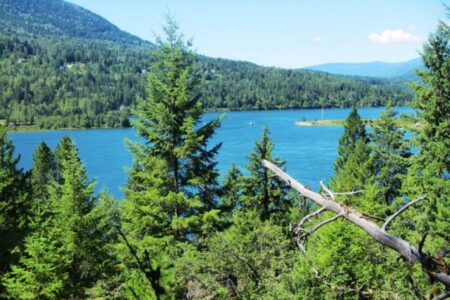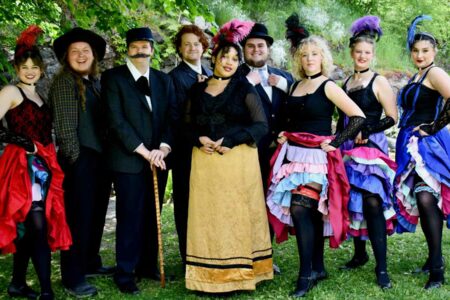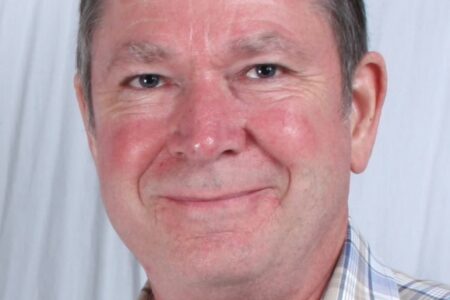Mass exodus from Rossland Secondary School—or nothing of the sort?
“It’s a big talk in the community that there’s this mass exodus out of here,” said RSS Principal Karen Lavender regarding recent reports that the school has fallen well short of its projected enrolment as students head down the hill to J.L. Crowe Secondary in Trail.
“Our projected numbers for RSS this year were 296 [students]. Our actual numbers are 298. So we’re actually up two students [relative to projections],” Lavender clarified.
“The [enrolment] numbers that came across the [school] board table on Sept. 24 were early numbers,” she said. “We have up-to-date numbers since that meeting. The Sept. 24 report showed that we were down 36 [students], but there was a comment in that report that because of our new blended learning program, it was taking us longer to get our numbers into the computer system. When those numbers were polled, it was still early days in our accounting.”
The “blended learning” approach that RSS has embraced this year was presented to the community this summer and has completely changed the way RSS teachers teach and students learn. Lavender said the program is “really starting to click” with both teachers and students after “a hairy first week” in September.
That hairy week pushed away eight students in Grade 10 and 11 who left RSS for J.L. Crowe. At the same time, RSS attracted two new students, one from Crowe and one from Stanley Humphries Secondary in Castlegar.
These two additions bring RSS to a total of 43 students who commute from Warfield, Fruitvale, Castlegar, and Trail. “That’s 43 students who come up the hill on buses every day because they’re choosing to come to this facility,” Lavender said. “And we have kids that have chosen to go to Crowe. That’s a good thing, because not every school is going to meet every kid’s needs.”
“This time last year, we lost seven kids to Crowe,” she added. “We know that kids move for all kinds of reasons. We’re a smaller school, so maybe they don’t want the same teacher three years in a row for something. Another example might be that they’re hockey players, so most of their social group is connected to the Crowe crowd.”
“This year, we know that the eight kids pretty much left because we’ve changed our system,” she explained. “They felt that they wanted to go to a school that was working on a system that they’d been used to for the last 10 or 11 years of their education.”
Lavender said all eight families talked to her about their decision. “For a lot of the kids, this was early days [for the new learning system],” she said, “and first week, second week, they didn’t get it and just wanted to go back to a regular classroom, and they didn’t want to pursue the semester to see where it would go.”
Lavender supposed that the decision would have been partly student-driven, and partly parent-driven. “I think the kids are still young enough that these are family decisions,” she said. “The kids probably initiated it, and the parents supported it.”
“Having two schools, [Crowe and RSS], and having choice for all these kids, is positive. Four of our students are coming all the way from Castlegar and five from Fruitvale. That’s an hour and a half on the bus every day. You’ve got to want to be here.”
The Numbers Game
“All of our staffing is formula-based,” Lavender explained. The projected numbers are really important since the school district uses them to set staffing levels.
Projected numbers are based on how many students are expected to feed into RSS from the elementary schools. MacLean Elementary graduates students into Grade 6 at RSS, and the École des Septs-Sommets sends students into Grade 7. “And we always get a few from St. Michael’s,” Lavender added, the Catholic elementary school in Trail that graduates students into Grade 8.
Had no students changed schools this year, RSS would have 304 students enrolled this year—eight more than projected—but the switches now leave RSS at 298 students, still two more than projected.
Because RSS is two over projected, Lavender said, “We’re pretty full. We’re so full that our Grade 6, 7, 8, and 9 classes are all at 30, [the class size limit,] and so we have a wait list for three kids.”
“Where we lost a few kids at Grades 10 to 12, we’re actually turning kids away at Grades 6 to 9,” Lavender said.
Demographically there is a bulge on its way up. This year, the average class size is around 42 students, “By the time our Grade 6 students hit Grade 7, they’ll be at 53. That will be our biggest class in the school,” she said
Furthermore, she added, Kindergarten at MacLean has 43 students right now, to which more students will likely be added at RSS due to the influx from École des Septs-Sommets in Grade 7 and St. Michael’s in Grade 8.
Blended Learning in Action
After that “hairy” first week as RSS transitioned from the traditional learning model into blended learning, Lavender reported that “things are running smoothly.”
There was a lot of resistance at first, Lavender said. “We’re untraining kids from 10, 11, 12 years of, you know, ‘Sit down, open your book, here’s what you’re doing,’ to ‘You’re going to go to this space or this space, you get to pick. You look at your courses and decide how much you’re going to get done today.'”
“Most of the major hiccups were flattened in the first week,” she said. “We meet with kids every day, we’re connected with the kids, and we’re pretty much on top of the kids that we think are of any concern.”
“We have some target dates. We have advisors working with kids who are saying, ‘Here are your timelines, and here’s how we can structure you.’ But fundamentally, we don’t have kids being told what to do anymore. We have kids making a lot of personal choices. That was just a massive switch for all of our kids,” she said.
“And every day we have kids landing on their feet. The light bulb is going on and they’re getting it. There are more and more kids daily saying this system is really cool, it’s great, and it’s going to be good,” she said.
“It’s really starting to click, and it’s clicking everywhere,” she continued. “You can see teachers rolling with it and really starting to develop their courses more, since the [support] is in place. And you can see can see kids starting to walk in, look around, and ask questions. Some of them are happier with the one-on-one teacher time, even though there is also a seminar that looks similar to a classroom.”
And How are the Teachers Faring?
“This came from teaching staff,” Lavender clarified to start. “This didn’t come from my office, this is a school initiative. I came late to this.”
“Even though there are always going to be teachers who struggle with it more than others, as with all of our students—some click right away, and others are slower to pick it up—everyone’s getting there. There’s a lot of internal team support going on there between staff,” she said.
Nevertheless, especially during this transitional period, Lavender described the teachers’ workload as astronomical. She said, “I know there are a few people in the community who are probably saying this is easier for teachers. But this is astronomically more difficult. Partly that is a result of this being different.”
“For a teacher who has been in this building for twenty years, their classes have changed, and what they’ve taught in their classes has changed in the twenty years, but the structure hasn’t changed,” she said. “All of our teachers are starting from scratch, in terms of how they’re teaching, the way they’re doing it, the way they’re interacting with kids, the way they’re meeting with kids, all of those pieces are different. It’s re-thinking everything that they’ve ever done.”
When this transition period is over and things settle down, Lavender thinks the teachers will face a “similar workload, but a different workload.”
“Where we used to have a big prep and marking workload, now the workload is working individually with kids and always working their courses so they have personalized choices for different kids, so not all kids are going to be doing the same thing. They’ll develop project work and assignments that meet different needs of kids, and allow kids to choose different pathways,” she explained.
Just as the teachers’ tasks will shift from a mundane workload to one characterized by creative design, Lavender hopes this approach will spur similar results in the students. “We’re looking to make our students creative learners, critical thinkers, deep learners, independent learners,” she said. “But to do that the teacher has to be able to support that from a completely different level than they’ve ever done before.”
International Flavours
RSS fills another niche in the district as well, Lavender explained—the school attracts international students.
Four Grade 10 and 11 international students come from the School District No. 20 International Student Program, and another seven international students are in the Ski Academy, in Grades 8 to 11.
“They’re all paying international student fees that go to the school board office,” Lavender said. The rate is the same as for provincial students, but they are privately funded instead of publicly funded.
“Having eleven international students in our building is high,” relative to what is seen in other SD20 schools due to the attraction of Rossland’s recreational amenities, she added.
“We like it, this year in particular, because we have kids here from Germany—from the district program—and in the Ski Academy we have kids from the U.S., the U.K., Romania, Russia, Spain, and Germany. So of those seven [Academy] kids, we have six countries represented. It’s pretty cool.”
Besides adding to the “multiculture” at RSS, Lavender said, “It shows the local kids that what they have here in this building is important. If kids are coming from other countries for our programs and our education, then that only shows what we’re doing is good. People aren’t going to pay $9000 per year (or $11,000 per year if they’re ESL) for an education that’s not that good.”
“Do we help with the international program? Yes, since it’s easier to draw kids to RSS,” she said. “The bulk of the kids are at RSS, and Stanley Humphries seems to be starting to draw more kids. The kids that are coming through the district program are coming to this area for the lifestyle. They want to live in the mountains because they want to ski and bike and hike and do all those things.”
























